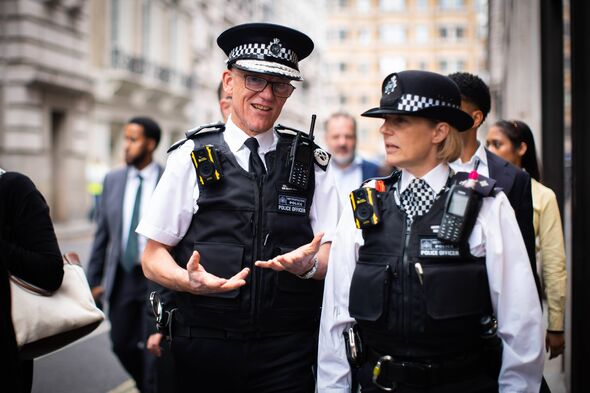The Metropolitan Police, Britain’s largest law enforcement agency, has announced a significant expansion in its deployment of live facial recognition technology, intending to more than double its use to up to ten operations per week. This strategic shift underscores a broader restructuring effort aimed at optimizing resources amidst considerable financial constraints and a reduced workforce.
This decisive move comes as the force navigates substantial budget shortfalls, necessitating the restructuring to compensate for the loss of 1,400 officers and 300 staff members. The financial pressures are driving a comprehensive overhaul of police operations, with technology adoption playing a crucial role in maintaining public safety and operational efficiency despite fewer personnel.
Alongside the increased use of advanced surveillance, the restructuring also involves reallocating officers to bolster key areas, including the force’s public order crime team. This reallocation directly addresses an increased demand linked to protest-related incidents that have surged over the past two years, signaling a proactive approach to evolving public safety challenges.
Specifically, the Met detailed that live facial recognition deployments will now occur up to ten times weekly across five days, a notable increase from the previous schedule of four times per week over two days. This intensified application highlights the force’s commitment to integrating technology deeper into its crime-fighting strategies, aiming for enhanced detection capabilities.
The expansion follows the Met’s revelation earlier this month that live facial recognition has already facilitated 1,000 arrests to date, with 773 of these leading to charges or cautions. Despite these operational successes, civil liberties advocates like Charlie Whelton of Liberty have voiced profound concerns, emphasizing the critical lack of regulatory frameworks governing the technology’s deployment and its potential infringement on individual rights.
While proponents argue that live facial recognition is vital for identifying wanted criminals, sex offenders, and convicted stalkers, its widespread application remains a point of contention regarding privacy and oversight. In parallel with technology enhancements, officers are also being redeployed to neighbourhood teams to address street-level crime, including phone thefts, anti-social behaviour, and shoplifting, reflecting a multi-faceted approach to crime reduction.
Further strategic reallocations include a 50% increase in officers assigned to the West End and an additional 90 officers moving into new or enhanced town centre teams across six high-priority areas for robbery and theft: Brixton, Kingston, Ealing, Finsbury Park, Southwark, and Spitalfields. This targeted deployment is supported by record funding from City Hall, demonstrating a commitment to visible policing and community confidence.
As Britain’s largest police force, comprising over 33,000 officers and more than 11,000 staff as of February, the Met faces immense operational complexities. Commissioner Sir Mark Rowley previously warned of a £260 million budget deficit, which has already led to cuts impacting services like the Royal Parks police and dedicated schools officers, underscoring the necessity of innovative, cost-effective solutions.
The decision to double down on controversial facial recognition technology, coupled with significant internal restructuring and targeted redeployments, signifies a pivotal moment for London’s policing strategy. This approach aims to maximize operational impact and restore public trust amid severe financial constraints, balancing technological advancement with community-focused crime prevention.






Leave a Reply